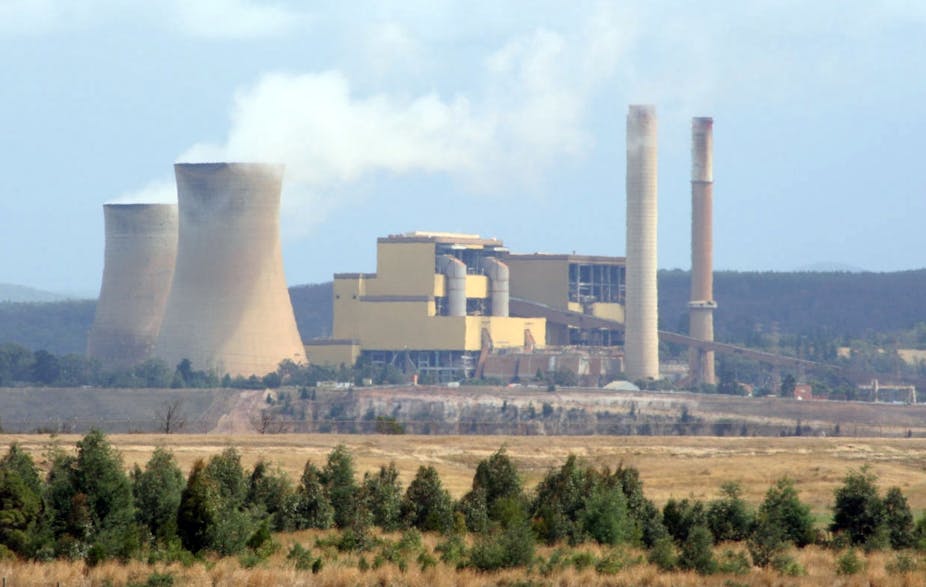You could be forgiven for missing it, but on the Friday afternoon before Christmas, federal environment minister Greg Hunt released the draft details of the Emissions Reduction Fund – the centrepiece of the government’s Direct Action climate policy.
The Direct Action plan is crucial if Australia is to meet its modest emissions goal of a 5% reduction on 2000 levels by 2020. But this first draft is beset by loopholes that could mean the plan delivers less bang for its 1.5 billion bucks over the next four years.
There are three standout problems. First, there is a risk that money will be given to carbon-reduction projects that would have gone ahead anyway, thus taking funding away from other projects. Second, the way emissions reductions are calculated could potentially penalise those who have already made cuts, while the most intense polluters might be spared from having to bring themselves into line with industry best practice. And third, companies that fail to meet their emissions pledges could be given long deadlines to put it right, with only minor financial penalties.
Commercial viability
Under the draft plan, companies will be invited to bid for funding regardless of whether their project is commercially viable without it. Projects that are already viable without government help are naturally in a better position to make a competitive bid in the scheme’s “reverse auction” – by which the government will award funds to projects that promise the biggest emissions cuts for the least money.
Put simply, this means that a company that was planning to spend a million dollars on cutting carbon could ask the government to pay for just half of it. While that sounds like a win – a million dollars’ worth of emissions cuts for only half a million dollars of public money – bear in mind that those cuts would have happened anyway, at no expense to the taxpayer. Meanwhile, those projects that would require more than half a million in funding to reduce the same amount of emissions, and would not have been implemented without funding, would be uncompetitive in the bid, and therefore still not get off the ground.
Previous schemes such as the Kyoto Protocol have guarded against this potential for taxpayer-funded corporate windfalls, by requiring projects to demonstrate ‘additionality’ – that is, proving that they would not have proceeded without government help.
Baseline call
The second problem hinges on the fact that emissions reductions cannot be calculated without reference to a previous “baseline” level. But the government has delayed its decision on how emissions baselines will be determined until mid-2015. How these are decided will be of greatest interest to the biggest emitters.
One option is to calculate emissions reductions “relative to past practices”, meaning that a company’s emissions will be compared to its historic levels. This means that the biggest polluters, and those with the highest emissions intensity (emissions per dollar of economic output), will find it relatively easy to meet their reductions commitments, because they have the most room for improvement.
In contrast, those who have already cut their emissions may find it relatively more expensive to make further reductions, having cut their “cheapest” emissions first. This would make them less competitive in the fund’s reverse auction.
The government has also considered the alternative option of assessing new projects on a “best practice” basis. So rather than comparing them with historic levels, their emissions would instead be measured against the best current domestic or international performer, or against the average of the top 10% of industry peers for that sector.
For companies with higher-than-average emissions intensity for their sector, a best practice approach would require more of them than their peers, making it more expensive for them to cut their emissions. For example, Chevron has several natural gas projects off the coast of Western Australia with larger than usual carbon dioxide emissions. Unsurprisingly, the company has called on the government to use historic baselines, arguing that it is a simpler approach.
The government says it has delayed its decision on how to determine baselines until next year, to allow time to work out the rules for new businesses that have no historic emissions data.
Meanwhile, it is worth noting that in 2011 the European Emissions Trading Scheme adopted “best available technology” benchmarking across all sectors except power generation, to reward projects that embrace new technologies such as energy efficiency upgrades and carbon capture and storage. Historical benchmarking (or “grandfathering”, as it has been nicknamed in Europe), had been blamed for an oversupply of emissions credits that has driven down prices on the carbon trading market.
Long deadlines, minor penalties
Yet under the government’s current plan, even a company that is given a favourable historic baseline, and then exceeds it anyway, could be given plenty of leeway.
The draft proposal suggests that businesses that emit above their baseline could be given time to invest in other emissions reduction projects. It also suggests calculating emissions on a multi-year average, meaning that companies could exceed their baseline in one year as long as they stay below it on average within the period.
What’s more, in cases where a company routinely fails to meet emissions targets, the government says it does not want the policy to be punitive. Therefore companies could well not comply, without suffering significant financial consequences.
The proposal is open for comment until February 21, and the plan faces plenty more scrutiny, particularly when new Senators take their seats in July. Those Senators also control the fate of the previous government’s carbon price, which has already been repealed in the lower house.
What’s clear is that for the Emissions Reduction Fund’s limited pot of money to be put to best use, these critical points need to be addressed. It’s certainly not beyond us to solve these issues, and to have the scheme deliver real opportunities for a low-cost, low-carbon economy fit for the 21st century. Let’s hope that is what we are all trying to achieve.

